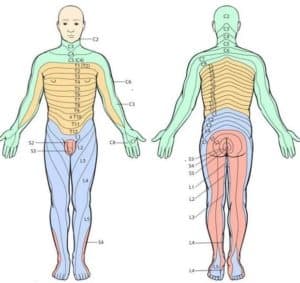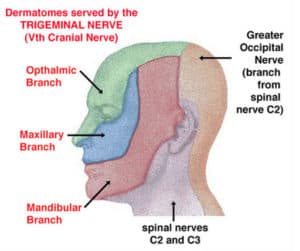Shingles (Herpes Zoster) 带状疱疹
Shingles is caused by the Varicella-Zoster virus. It is the same virus that caused chicken-pox. After the individual has recovered from chicken-pox, the virus hides itself in a nerve root close to the central spine. The virus can be re-activated when the individual’s immune system is compromised. The virus will travel from the nerve root along the nerve and affects the skin covering it. Each nerve root relates to a part of the skin called dermatome. Therefore, shingles often appears in a belt-like manner resembling the dermatome. On the upper body, the strip goes across the side. On the arms and legs, the shape often appears as straight or angled longitudinal strips.
Shingles can also appear on the face. It follows the trigeminal nerve and affects the respective dermatome. You have to be particularly careful if it affects the skin close to the eye as it will cause damage to the eye sight. You should see your doctor as soon as possible in this case.
Treatment options for Post-Herpetic neuralgia
- In order to soothe the itch, you can apply calamine lotion or take an oatmeal bath
- For post-herpetic neuralgia, there are many studies indicating Vitamin B12 injection is beneficial for repairing damaged nerves. Vitamin B12 in the form of Methylcobalamin or Hydroxycobalamin are the more absorbable forms and therefore are more effective
- Zinc oxide cream can be used to improve wound healing
- Acupuncture is effective in pain and itch relief for post-herpetic neuralgia.




